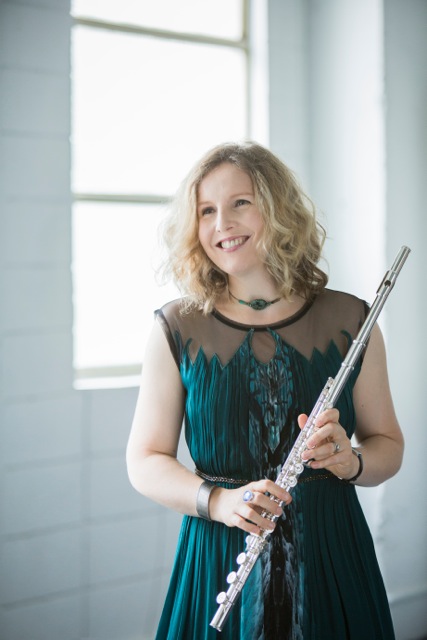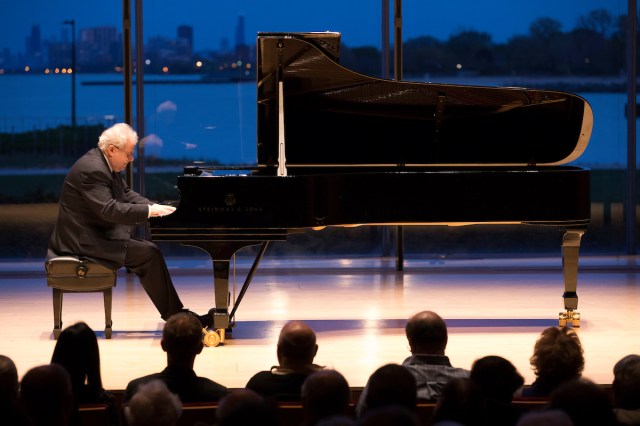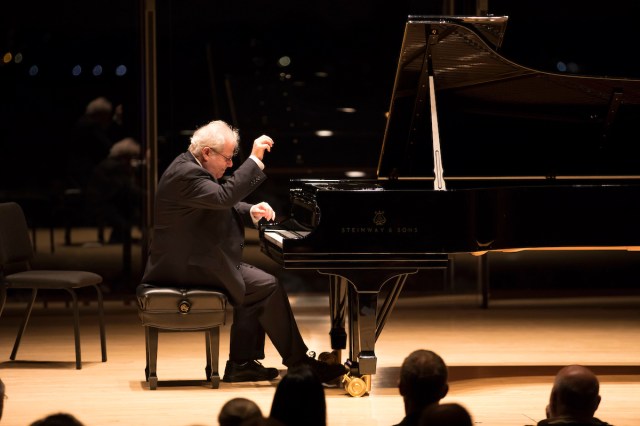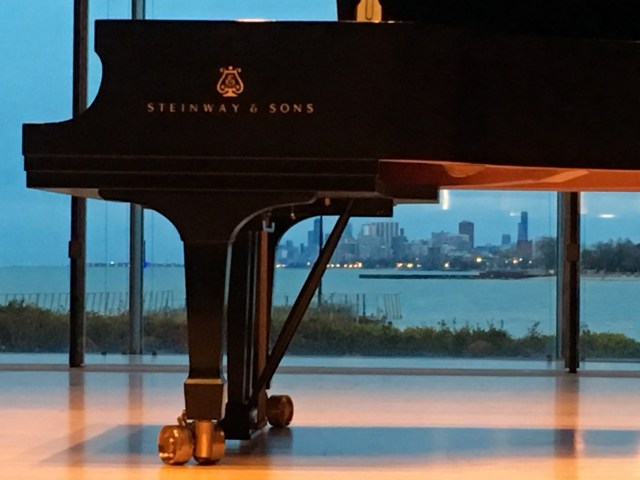Simon Keenlyside, baritone
Natalia Katyukova, piano
Reinberger Chamber Hall
Severance Hall
Cleveland, OH
May 19, 2019
Schubert: Winterreise, D911
If local audiences hadn’t quite gotten their fill of late Schubert with the weekend’s Cleveland Orchestra performance of the E flat major Mass, Simon Keenlyside offered the composer’s incomparable song cycle Winterreise in recital Sunday night, a prelude to his appearance with the orchestra the following week. The intimate Reinberger Chamber Hall – all too seldom used as a performance space – made for an ideal setting for the soul-baring songs, forlorn and icy cold. Though perhaps not the most seasonally appropriate on a spring evening, as if on cue with the subject matter, the temperature outside dropped appreciably nearing performance time. Supporting Keenlyside was pianist Natalia Katyukova who provided a remarkable accompaniment, on par with the baritone’s passionate delivery.

The impact of this 70-minute song cycle – although as the program books correctly noted, Winterreise isn’t truly a cycle given the lack of recurrence – was truly visceral, and one could scarcely imagine a better advocate than Keenlyside. Originally scored for tenor, Schubert allowed for other voice types, and Keenlyside’s case for Winterreise belonging to the domain of baritones was thoroughly convincing, the lower register well-suited to the gloomy poetry of Wilhelm Müller. The highlights were many, beginning with the opening Gute Nacht, strengthened by the rich darkness of the baritone and pained dissonances in the piano. Die Wetterfahne was of angst and unrest, while there was intense drama in Erstarrung, with some modest acting from Keenlyside to enhance the outcry – though this acting was less directed at the audience and more to convey the sense that we were witnessing a deep internal monologue.
A liquescent, rippling accompaniment and gorgeous lyricism from the singer in Der Lindenbaum made for an early highpoint in the cycle. I was struck by the palpable pain on the words “mein Herz” during Auf dem Flusse, while Frühlingstraum offered some momentary respite – that is, until the titular dream ended, the song residing in a tenuous gray area between dream and reality. Einsamkeit was as forlorn as the title suggested, and time stood still in Der greise Kopf, wherein the speaker wished he was graying and thus closer to end of life – but such was only an illusion from the wintry frost, the agony of life prolonged. Die Krähe was utterly haunting in both melody and imagery (perhaps an inspiration to Edgar Allan Poe?). There was heart-wrenching isolation in Der Wegweiser, in which the speaker felt shunned by society; Mut! saw his last embers of fiery defiance – buttressed by Keenlyside’s foot-stomping – before resignation. The unnervingly inconclusive Der Leiermann saw Keenlyside staring off into the distance, mere feet from the audience but psychologically miles away as matters remained painfully unresolved. I don’t often get the goosebumps like I did from this performance, magnificent yet exhausting in its depth and darkness.









